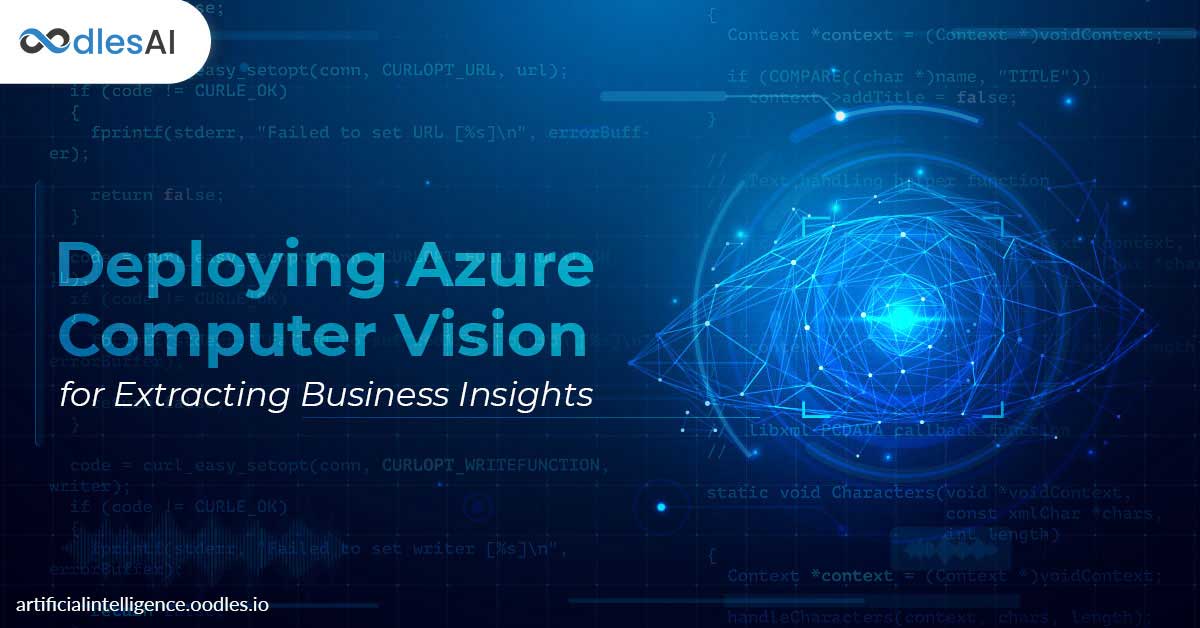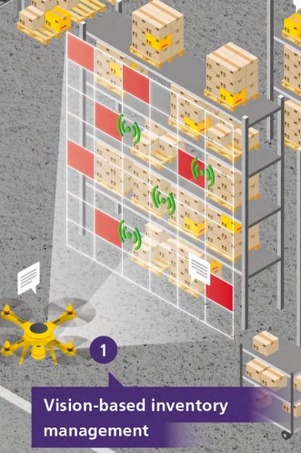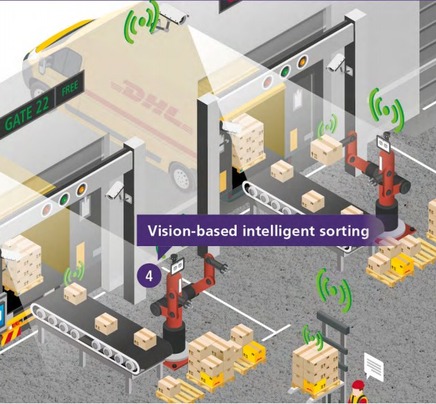Deploying Azure Computer Vision for Extracting Business Insights
Sanam Malhotra | 18th December 2019

Artificial intelligence (AI) is exhibiting proficient abilities in processing digital imagery for better value generation. Computer vision services are the force behind machine learning models to extract actionable insights from large business datasets and documents. Azure computer vision is one of the AI technologies under Microsoft’s Cognitive Services that encompasses in-depth image and video analysis. The dynamic features of Azure APIs enable multiple industry businesses to automate operations and accelerate productivity by channelizing unstructured data significantly.
Let’s explore how the logistics and healthcare industry can deploy several Azure computer vision APIs to propel growth.
Azure Computer Vision | Features and Functions
Microsoft Azure’s cloud-based computer vision API facilitates the deployment of machine learning algorithms to process complex images and extract valuable insights. The cognitive features of Azure’s Analyze Image API include the following-
1) Tag visual features to identify and tag visual features in an image such as objects, living things, actions, etc.
2) Detect objects and faces, for example, detect a dog, cat, or person and also process their relationship.
3) Detect commercial brands in images or videos from a large dataset of logos.
4) Categorize an image based on the different conditions and parameters.
5) Describe an image in human-readable language with complete sentences. The API can also identify the specific color schema of the image.
6) Detect domain-specific content in images such as celebrities and landmarks.
7) Optical Character Recognition to extract and assess the text from an image.

The function-specific machine learning algorithms underlying Azure computer vision API provide effective results when trained with the right data.
Let’s explore different Azure computer vision applications in the logistics and healthcare industry.
Streamlining Supply Chain Management in Logistics
The logistics industry is responsible to acquire, store, and transport goods and services from their origin to the respective destinations. Clearly, accessibility, accuracy, and quality are the essential nuts and bolts of the logistics industry.
The network-based nature of the logistics industry is enabling businesses to introduce AI-powered automation in supply chain management effectively. AI’s computer vision technology has the potential to fulfill the physical demands of various logistics operations by processing real-time data. With a combination of computer vision and machine learning algorithms, logistics businesses can augment the capabilities of their workforce in the following manner-
a) Inventory and Safety Management
Azure computer vision offers real-time warehouse inventory management by deploying surveillance cameras to track product placement and detect anomalies. Automated drones can scan warehouse premises to ensure safety by monitoring pick and pack tasks and raising alerts for accidental risks.

Source- DHL
b) Automated Sorting
Waste management is another critical activity in logistics businesses wherein Azure computer vision can automate the segregation of waste and recyclable items. For this, the system uses category taxonomy and image analysis API to identify and manage waste from moving conveyor belts.
_
Source- DHL
c) OCR for Invoice Processing
Optical Character Recognition is already a mature technology in parcel freight invoice processing. However, Azure’s OCR API optimizes the analysis of invoice text with precision and efficiency.
Also read- Unlocking the Potential of Computer Vision for Manufacturing Businesses
Improving Diagnostics in Healthcare
The complex nature of healthcare functions and data makes it an ideal ecosystem to deploy AI technologies. However, challenges like preventable medical errors, unconstructive redirection of medical data, and high operational costs hinder healthcare advancements.
According to Stanford University, the healthcare industry witnesses a 48% yearly growth in new medical data generation. AI’s ability to channelize this data explosion is essential to accelerate prevention and treatment cycles across borders. With computer vision, healthcare providers can automate and optimize the following operations-
a) Synthesize EHR
Azure computer vision applications can rapidly structure, classify and analyze patients’ electronic health records (EHR). ML models can support quick detection and notification of common anomalies in medical images like X-rays, CT scans, and MRIs.
b) Diagnose Heart Diseases
According to the World Health Organization (WHO), every year over 17.9 million people lose their lives to cardiovascular diseases. Azure computer vision can improve diagnosis by visualizing coronary arteries and the blood flow. Also, machine learning models can be trained with pathology images to automate the early detection of heart risks and chronic diseases.
Also read- Visualizing the Future of Computer Vision Across Businesses
Executing Azure Computer Vision with Oodles AI
At Oodles, our AI team is skilled at deploying Azure Computer Vision for developing multiple industry AI solutions. We have experiential knowledge in extracting meaningful insights from images and textual business data with-
a) Real-time object and face detection
b) Visual tagging of features
c) Brand detection
d) Image categorization
e) Detailed Image description
f) Text extraction with OCR
g) Domain-specific content
In addition, our AI team has achieved over 80% accuracy in detecting anomalies within large datasets of images and documents. We use comprehensive machine learning libraries such as OpenCV and TensorFlow to train ML models for industry-specific results. Our multidimensional computer vision services extend to on-premise and cloud-based integration for eCommerce, healthcare, logistics, educational, and other businesses.
Talk to our AI development team to know more about our computer vision service.



